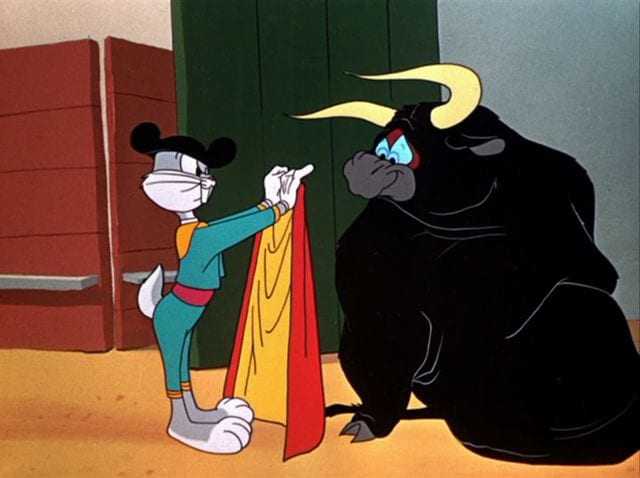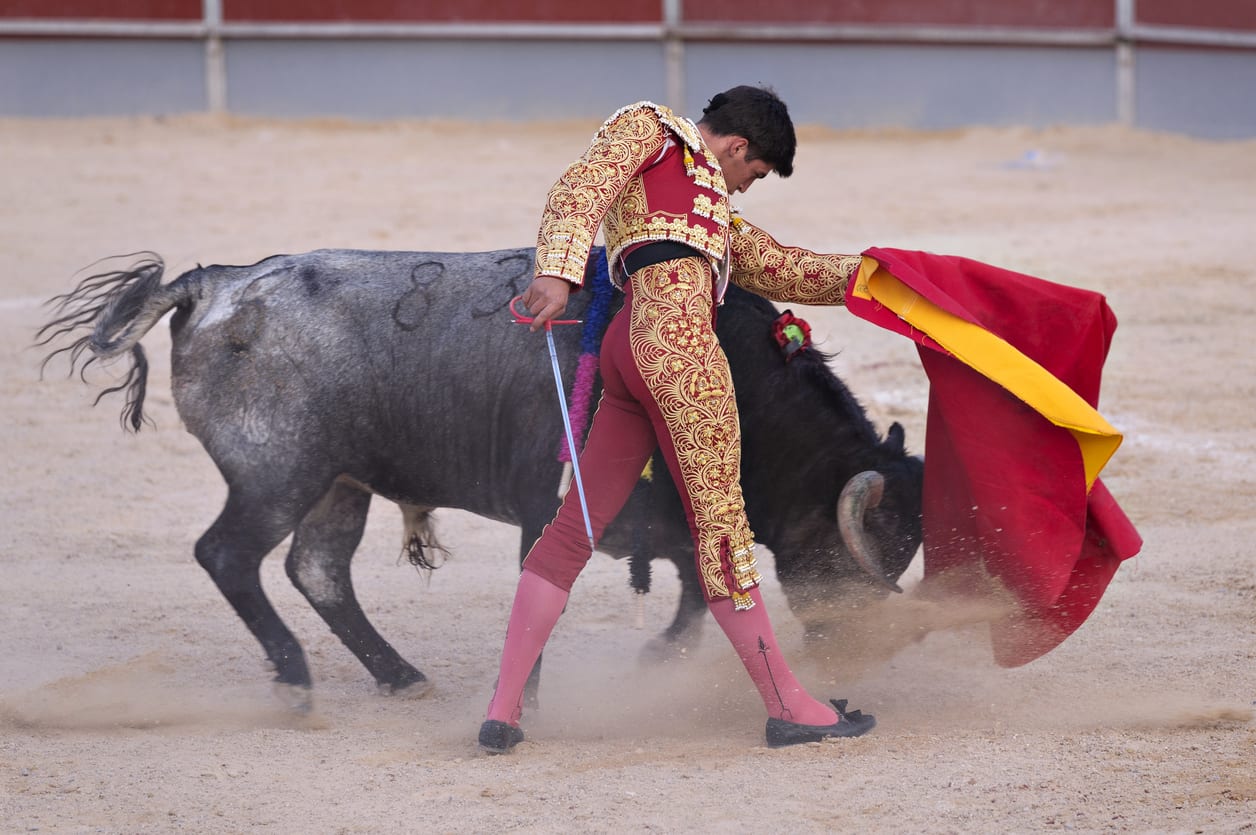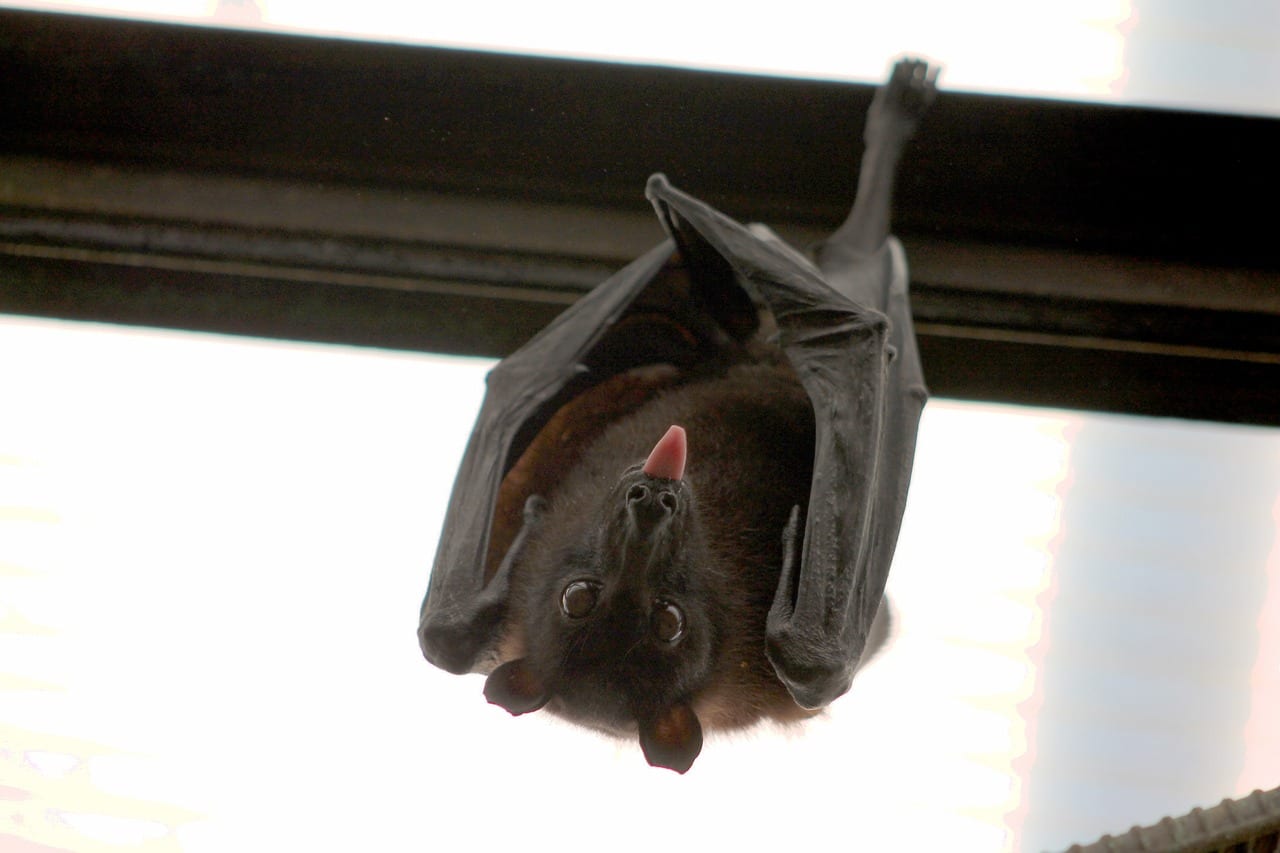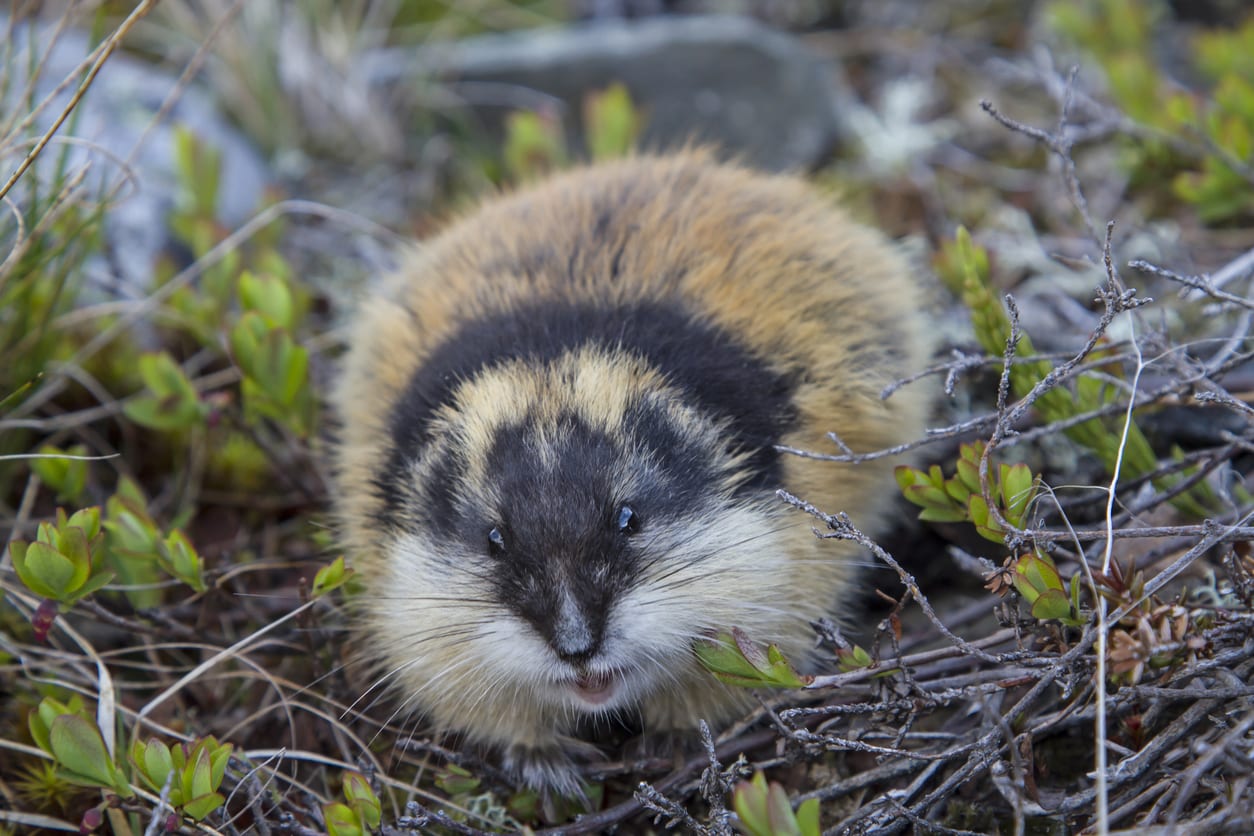Trending Now
A lot of what we think we know is wrong. That can be a tough thing to accept – but once you do accept it, you’ll find it a lot easier to correct your misbegotten beliefs! And really, isn’t that better? Cause if you know you’re wrong, you’re way closer to being right. And in the end, we all just want to be right!
Right??
Myth 1: Bulls hate the color red.
If you used to watch Looney Tunes when you were young, perhaps you remember the episode when Bugs Bunny was a matador, using his red cape to mesmerize Toro the Bull into a fanatical rage.

Photo Credit: Warner Bros
Aside from how it features a cartoon rabbit, this image is, in fact, not all that far away from what a bullfight actually looks like.

Photo Credit: iStock
Front and center is the matador’s muleta – his red cape. The cape he uses to get the bull to charge in, so he can stab it (bullfighting is pretty rough). And the bulls really do charge at the muletas – which is probably why we all think they hate the color red.
But, actually, bulls don’t have the same color receptors in their eyes as we do, so they can’t even see the color red.
What actually brings the bulls to charge is the movement of the cape, rather than its color. In fact, the bullfighter has a different cape that he brings out earlier in the fight, called a capote, that is usually magenta and yellow, and the bull still charges it. By the time the muleta comes out, the bull has been stabbed and harassed for a long time, and it has likely lost a lot of blood – which makes it angry and charge-happy. It’s also why the cape is red: to hide the bloodstains it will inevitably get on it.
Myth #2: Bats are blind.
No. Most truly blind animals have evolved to have either no or very stunted eyes. Bats definitely have eyes (though some species have small eyes and some have big eyes), and if you can get close enough it becomes pretty clear they use them. Still, blind as a bat is in the vernacular and not likely going anywhere.

Some bats are totally adorable!
Photo Credit: Pixabay
The myth of blind bats probably arose because they are nocturnal – which honestly is pretty bad reasoning, considering how many other nocturnal animals there are that aren’t blind. In fact, bats have fine eyesight, and some of them can see much better than people. But their eyesight isn’t what makes them such incredible nighttime fliers.
That’s where their echolocation comes in. As they fly, bats emit very high pitched squeaks (higher than people can hear), which bounce off of their surroundings. Bats’ hearing is so sensitive that they can hear the sound waves’ echoes and use them to create a moving mental map of everything around them – even down to the tiny delicious bugs they love to eat. So not only are bats not blind, they basically have superpowers compared to us measly humans.
Myth #3: Duck quacks don’t echo.

Photo Credit: Pixabay
I had actually never heard this before, but apparently this is a thing that some people believe.
Of course ducks’ quacks echo.
This myth perhaps arose because ducks, unlike many waterbirds, don’t often naturally congregate around cliffs or other areas where there would be a lot of echoes. Instead, you might more often hear a duck quack from the middle of a lake, or along its grassy edge. Also, quacks can be pretty quiet, and they often sort of wind down at the end, which means it’s a little tough to tell the difference between a quack that echoes and one that doesn’t.
But there is simply nothing special about the noises that ducks make – also there are loads of types of ducks, and they all make different noises – that would prevent it from echoing in the right circumstances. If there were, that would make duck quacks unlike all other sounds known to man.
Acousticians have proved it experimentally. So there.
Myth #4: Dogs and cats are colorblind.

Photo Credit: Pixabay
To say that an animal is colorblind sort of misses the point, but to understand that, we need an extremely basic explanation of seeing in color.
Basically, you have certain cells in your eyes that can ‘see’ specific wavelengths of light. When they register those wavelengths, they send the information to your brain, where it gets processed into an image. Humans have three different color-sensing cells, called cones, which let us see blue, green, and red – and also all their combinations. If thats confusing because they aren’t the primary colors you remember from kindergarten, well…it’s complicated, and not entirely relevant at the moment.
To have not evolved any sort of color vision would be very disadvantageous for an animal that depends on its vision for anything at all – and in fact, not very many animals are completely colorblind (i.e. seeing totally in greyscale).
Dogs and cats, which are often thought to exist in this greyscale world, actually just have fewer types of cones than we do (only 2), which means they see fewer colors. The colors they do see are weaker and more pastel than the colors we see.
Myth #5: Lemmings commit mass suicide.

Lemmings are SO CUTE.
Photo Credit: iStock
Just…what? This myth is so bonkers. How could the species continue if they regularly all killed themselves by jumping off cliffs?
Apparently, Lemming myths of various sorts have been around for a long time; back in the 1500s, it was proposed that they fell from the sky during big storms. The modern myth, largely propagated by a Disney documentary from the 1950s called ‘White Wilderness‘, is that they regularly give in to a strange suicidal impulse en masse, and jump off of cliffs into the ocean in big herds (this scene in the movie was entirely staged).
Actually, lemmings reproduce so rapidly that many of them have to migrate every few years – or else they’ll overpopulate and die off. Their migration can actually involve them jumping off of cliffs and swimming across rivers, but it’s always to get somewhere. Sometimes they will get so exhausted swimming that they’ll die. But lemmings are still around, so clearly they’re not all killing themselves.
Myth #6: Vanilla Extract Is Made from Beaver an*l Gland Secretions.

Vanilla bean pods drying in the sun
Photo Credit: Pixabay
Ummm. It’s right there in the name – vanilla extract. As in, extracted from vanilla. For vanilla extract to be labelled pure, the FDA requires that it contain at least 35% ethanol and 100g macerated vanilla beans per liter. The only other ingredient in natural vanilla extract is (usually) water.
But. BUT.
Beavers actually do secrete an apparently very good smelling, tasty substance from a gland close to their anuses, the castor gland. And the stuff they secrete, castoreum, has historically been used as a flavoring – including as a vanilla substitute! Since it’s non-toxic and naturally derived, manufactures don’t have to list it by name. They can simply say “natural flavoring.”
But since castoreum is not exactly simple to get (only around 300 lbs. are still made annually, compared to 2.6 million pounds of vanillin), it is not actually used much for flavoring anymore. Though if you buy yourself a nice perfume, you could very well be spraying yourself with a beaver’s near-an*l secretions.
One last note – there is a traditional Swedish schnapps flavored with castoreum that is called “Bäverhojt”, which literally means beaver shout. I just liked that.






